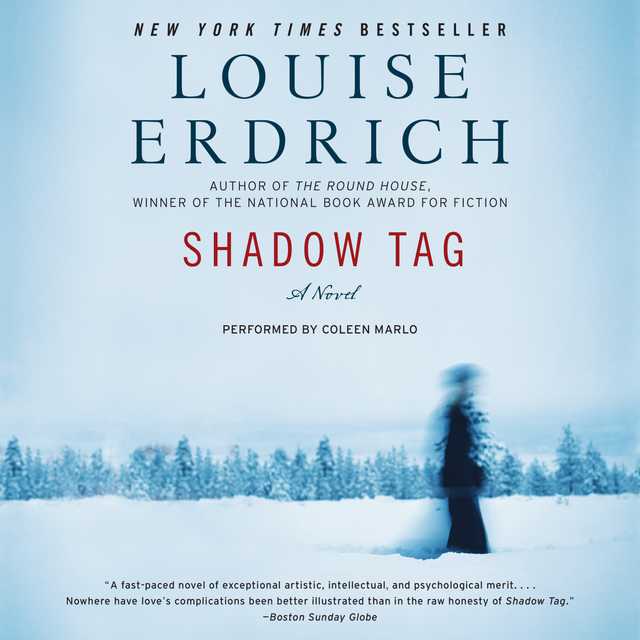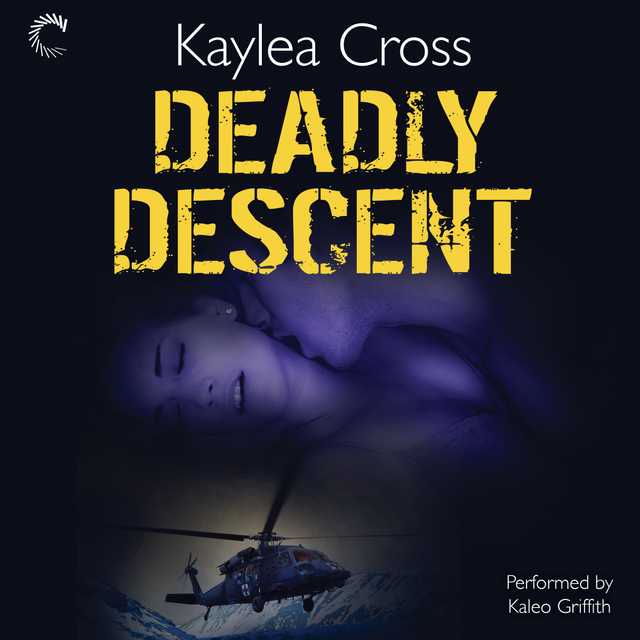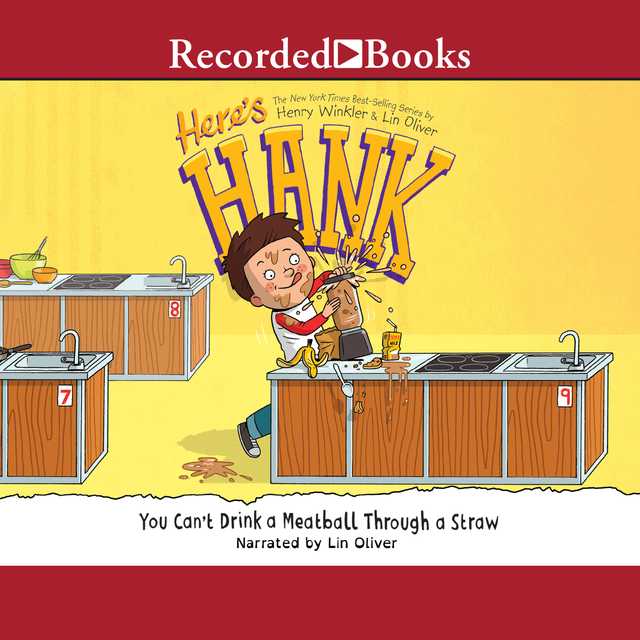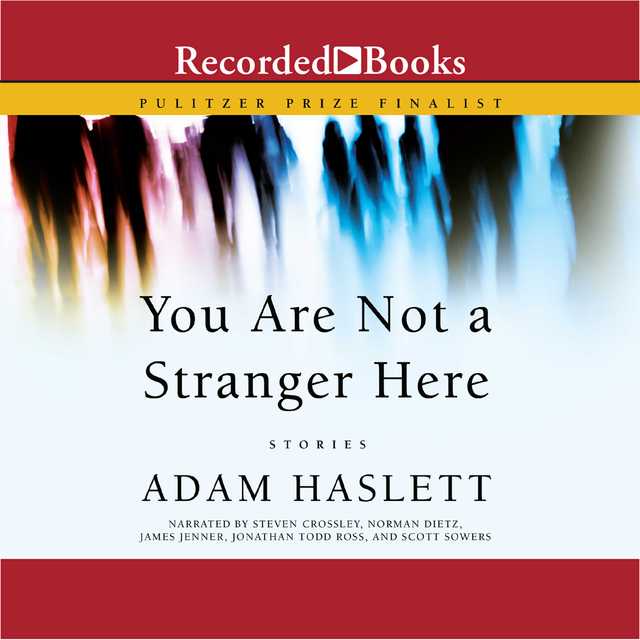Shadow Tag Audiobook Summary
Shadow Tag is a stunning tour-de-force from Louise Erdrich, the bestselling author of The Plague of Doves and National Book Award-winner The Round House. When Irene America discovers that her artist husband, Gil, has been reading her diary, she begins a secret Blue Notebook, stashed securely in a safe-deposit box. There she records the truth about her life and marriage, while turning her Red Diary–hidden where Gil will find it–into a manipulative charade. As Irene and Gil fight to keep up appearances for their three children, their home becomes a place of increasing violence and secrecy. And Irene drifts into alcoholism, moving ever closer to the ultimate destruction of a relationship filled with shadowy need and strange ironies.
Alternating between Irene’s twin journals and an unflinching third-person narrative, Louise Erdrich’s Shadow Tag fearlessly explores the complex nature of love, the fluid boundaries of identity, and the anatomy of one family’s struggle for survival and redemption.
Other Top Audiobooks
Shadow Tag Audiobook Narrator
Coleen Marlo is the narrator of Shadow Tag audiobook that was written by Louise Erdrich
About the Author(s) of Shadow Tag
Louise Erdrich is the author of Shadow Tag
More From the Same
- Publisher : HarperAudio
- Abraham
- American Gods [TV Tie-In]
- Dead Ringer
- House of Sand and Fog
- Prey
Shadow Tag Full Details
| Narrator | Coleen Marlo |
| Length | 5 hours 45 minutes |
| Author | Louise Erdrich |
| Category | |
| Publisher | HarperAudio |
| Release date | February 02, 2010 |
| ISBN | 9780061953637 |
Subjects
The publisher of the Shadow Tag is HarperAudio. includes the following subjects: The BISAC Subject Code is Fiction, Native American & Aboriginal
Additional info
The publisher of the Shadow Tag is HarperAudio. The imprint is HarperAudio. It is supplied by HarperAudio. The ISBN-13 is 9780061953637.
Global Availability
This book is only available in the United States.
Goodreads Reviews
Will
November 21, 2021
Shadow Tag is, we hear tell, a novelization of the demise of Erdrich’s marriage. It is an insightful, beautifully written portrait in which the character of the marriage, Dorian-Gray-like, is revealed to be somewhat wanting. Gil and Irene are the unhappy couple.Gil has made a successful career painting his wife. We see in what we are told about his paintings the changes in their marriage. Irene America had been the subject of his paintings in all of her incarnations—thin and virginal, a girl, then womanly, pregnant, naked, demurely posed or frankly pornographic…but now he was losing confidence and control. His paintings were hiding from him because Irene was hiding from him. He could see it in the opacity of her eyes, the insolence of her flesh, the impatient weariness of her body when she let down her guard. We see in the images he paints the changes in how she feels. He may deny what he is seeing, but the paint does not lie. Irene sees her artistic relationship with Gil as her being food for him to consume. Louise Erdrich - image from BritannicaIrene is an art historian and is researching a work on George Catlin, so there is plenty of interplay between her topical musings and the reality of herself as a literal work of art. She talks about how Catlin had added an element in his paintings, new to most, the shadow. Many of the locals were concerned that their souls were being taken by these paintings, as Irene wonders if she is losing a piece of herself with each of Gil’s paintings. Contemplating Catlin’s work,Because of the shadows, his paintings had the direct force and power of the supernatural, the dream replica, the doppelganger. It was as if a sudden twin had been created right before the subject. A twin that seemed to live and breathe and follow one with its eyes and yet was motionless. The paintings were objects of veneration and of fear. Some swore uneasily that those who allowed their portraits to be painted, eyes open, would not lie peacefully after death, as some aspect of their being would live on, staring out at the world. Others, disturbed that Catlin painted buffalo and took them away with them in his portfolio, tied his actions to the increasing scarcity of the herds upon which their lives depended. So it was, the images stole their subjects and, for the rest of the world, became more real, until it seemed they were the only things left.They are both Native American, less than 100%, but enough to count. Erdrich always brings to her tales her experience as a Native American, offering those of us who are not of that group a look into Native culture and issues. Still, a bad marriage is a bad marriage, and Erdrich offers rich detail describing what a failed union looks like, the games each partner plays, the lies each partner tells, the roles of the children in the usually silent battle, and how their familiarity binds them. they reverted to one of their endless arguments, first about the noodles, then about kitsch. This was not fighting, but the sort of argument that could go on for years and years, where each found bits of evidence to prove their point and dropped it into the next go-round a month, two or three months, on. They were back in old territory. They argued sometimes for comfort.If GR readers are typical of the population at large, it is likely that about half of us have known the joys of a marital demise. I know I have. Erdrich’s scenes from a marriage rang very true in many instances, and you know early on in the story that the marriage is in serious danger. For years, he thought, he had been mourning a death without knowing exactly who had died or how it had come about.The story alternates between third-person depiction of the relationship between Irene and Gil, and Irene’s entries into her two diaries. One she keeps for herself, the other she uses as a weapon against Gil. She knows he sneaks looks at it, and she plants lies there to torment him. They have three children, which adds battleground material between the pair. And a description of how one of the children keeps a memory log sounds very much like something from the author’s personal history. Erdrich fills her novels with imagery and power. One in particular was a visualization of a wall between the two that contained its own DMZ. Another was looking down into frozen lake water I wish we’d see a fish or turtle or something more down there, said Riel. [Gil and Irene’s daughter] And it did seem almost anything might swim into view. But there was only an amber leaf, a frayed heart suspended at the edge of a vertical white crack that went down so far it disappeared. Despite the disappointment, the anger, the cruelty, the dishonesty, these people are very, very bonded. Can they survive without each other? Erdrich offers a shocking twist at the end, but the primary benefit is in the journey through the shadows of this marriage, and the light of Erdrich’s artistic mastery.==============================EXTRA STUFFThe author’s FB page. Erdrich is part owner of BirchBark Books in Minneapolis. It is not quite her personal web site, but is, I guess, close enough.A fascinating article on George Catlin in Smithsonian MagazineOther Louise Erdrich novels I have reviewed-----2021 - The Sentence-----2020 - The Night Watchman-----2017 - Future Home of the Living God-----2016 - LaRose -----2012 - The Round House -----2008 - The Plague of Doves -----2005 - The Painted Drum
Jessica
June 21, 2021
If you keep up with me you know I love dark but this was DARK. I have spent years meaning to start reading Erdrich but never quite knowing where to start and someone suggested this one as being up my alley. They were right, it totally is, but phew I hope the rest of her writing is not this bleak.This is one of those books that follows a collapsing, highly dysfunctional marriage. But the thing that's so frustrating about this particular bad marriage is how neither Gil nor Irene will actually end it. The most affecting scenes, for me, were their two attempts to go talk to a marriage counselor. They went in for a specific purpose, the appointment quickly devolved into squabbling, then escalated into animosity, and then ultimately laughter. And the couple would leave, hand in hand. It made my stomach turn. But this is exactly what Erdrich wants to do, to show you this constant give and take, back and forth, with neither ever able to do anything to move forward.I am coming to this years later, but a little googling will tell you that this is a semiautobiographical novel based on Erdrich's own very troubled marriage where her husband was unable to leave her and ultimately took his own life. This isn't necessary to know, but I think it's helpful to give a potential reader an idea of just how damaged of people we're dealing with here. There are also content warnings for child abuse, domestic violence (by both spouses), sexual assault, suicide, and alcoholism, and the thing is that these acts (mostly off the page but not all) are not the most disturbing part, the most disturbing part is that they happen and then everyone just keeps on going as if it's normal. It's some big and heavy stuff and yet Erdrich walks the line well. Showing the reality of this kind of life day to day, occasionally giving you hope but then snuffing it out within a few pages. The central device is particularly brilliant, the two diaries kept by Irene. When she finds out her husband is reading her diary, she keeps a separate one with her real thoughts while simultaneously toying with him in the one she keeps at home. Both of them manipulate each other. And much of it happens in front of their three children, who are supporting characters but clearly aware of their parents' deep disdain for each other, but who like their parents cannot imagine any other life but the one they have. Often this style of prose doesn't work for me, broken up into small bits. But here it never feels all that broken up. There may be pauses, but it's quite linear and usually one piece follows immediately after the previous one. It was clear reading this that Erdrich is deeply talented, weaving this story in such a readable way even while you feel such disgust and frustration. I'm looking forward to reading more of her, though hopefully with some different subject matter.
switterbug (Betsey)
February 26, 2011
I was floored that Louise Erdrich did not win the Pulitzer this year for her magnum opus, The Plague of Doves: A Novel (P.S.). That novel doubtlessly cemented her as a peerless wordsmith and unrivaled postmodern writer of satire cum tragedy. Her dazzling metaphors--pataphors, actually, place her in a pedigree by herself. She combines ripples of Philip Roth, undertones of Nabakov and the mythical, regional realism of Faulkner. Her locale is often within the Ojibwe Native populations of North Dakota, as in The Beet Queen: A Novel (P.S.) and Love Medicine (P.S.) (as well as Plague of Doves). She has mastered the multiple-narrative voice, braiding multi-generations of families into an innovative whole.In a striking departure from her previous work, Erdrich's Shadow Tag is a psychological examination of a marriage and family on the brittle brink of decay. Instead of the focus being on ancestral histories and buried secrets, the focus is on one family--Gil and Irene and their three young children--and their private devastations. Gil is an artist who achieved substantial success painting portraits of Irene, some of them deeply disturbing. Irene has resumed her doctoral thesis on a 19th century Native American painter whose subjects have died soon after being painted. This provides a stunning metaphor and theme for the title, Shadow Tag, a game where each person tries to step on the others' shadow, while protecting their own. Native peoples believe that their shadow is their soul. To step on their shadow or to paint their portrait is to steal their soul. Irene is one-half native and Gil is one-quarter, a fact that adds a personal engagement with the lore.Gil possesses a stealthy, dangerous charm; he is haunted by jealousy and lashes out physically at their son, Florian. Irene, a tall, arresting beauty, drinks wine like water and keeps two diaries. She leaves a false, incendiary Red Diary for Gil to find (she is meting out punishment for his invasion of her privacy) and the true Blue one hidden in a bank vault. Gil and Irene inflict mental, emotional, and physical pain on each other as they struggle individually to maintain control.Although narrated in the third person, the unreliable voices of Gil and Irene are woven in variously--through their introspection; by Irene's diaries; and from the children's uncertainties. The shocking candor of their actions is mired in dark motivation and murky intentions. A maddening cat and mouse game ensues; the Muse is a jealous mistress and will not be ignored. As Gil agitates over his final portrait of Irene, and Irene skillfully undermines Gil, a menacing cloud is cast over the family.Erdrich controls her narrative with razor precision, deftly restraining and then escalating the spaces between words to arouse and intensify the reading experience. The prose is starkly sensuous, lean and taut, nuanced but inflammatory. The characters connect with a singed, bitter bite and a sable, blighted love. If you require "likeable" characters that are moral exemplars, this novel is not for you. However, if you want to sink your teeth into a bald and naked exploration of a shattered marriage, etched with moral ambiguity, you will not be disappointed. Moreover, the ending will stagger you with its poetic brilliance. It is one of the most thought-provoking final pages I have experienced in eons. A mouth-watering treat for literature lovers.
Ron
December 15, 2013
Louise Erdrich's new novel is a tense little masterpiece of marital strife that recalls her tragic relationship with the poet Michael Dorris. Gossips will trace the story's parallels to the author's life, but for all its voyeuristic temptations, "Shadow Tag" is no roman à clef, no act of spousal revenge on her estranged husband, who committed suicide in 1997. Instead, Erdrich has done what so many writers can't or won't do in this age of self-exposure: transform her own wrenching experience into a captivating work of fiction that says far more about the universal tragedy of spoiled love than it reveals about her private life.After the vast, swirling canvas of "The Plague of Doves," which was a finalist for the Pulitzer Prize last year, Erdrich has departed from her multilayered stories about an Ojibwe reservation in North Dakota. "Shadow Tag" stays trapped in a bitter Minnesota home where Irene and her older husband, Gil, are nursing what they know is a dead marriage. Irene wants a divorce, but Gil won't agree, and so they bicker and make up, fight and forgive, convinced -- foolishly -- that they can keep their enmity from poisoning the lives of their three children.If you haven't lived through this sad story yourself, you know someone who has. And of course it's the plot of a library's worth of domestic novels, but Erdrich distinguishes her own version in a variety of exquisite ways. For one thing, she keeps "Shadow Tag" tightly focused, abandoning entirely the discursive style of her previous books. What would have been oppressively grim in a longer work remains arresting in this taut tale, which comes to us from three narrators as a series of finely cut moments, each just a page or two long.As is often the case in Erdrich's novels, the way the story is told and who's telling it are crucial to its meaning. In this case, the person behind the cool omniscient narrator isn't revealed till the final chapter, but both of the other two narrators are Irene, who opens the novel by confessing, "I have two diaries now." In her real diary, stored in a safe deposit box, she records her fury and frustration with Gil, who won't agree to dissolve the marriage that's tormenting them. But in another diary, a faux one hidden at home where she knows he'll read it, she makes up affairs and sexual escapades, all carefully designed to enrage and aggrieve him. As a story of aggravated jealousy, it's as though the same person were playing Desdemona and Iago."Shadow Tag" fascinates us because its sympathies, like Irene's, are so unstable. The man she hates is also the man she loves, and his passionate desperation to win her back is alternately endearing and repellent, eventually threatening. It's a devastating portrayal of the circular insanity of romantic obsession. He clings to the hope that a grand act of generosity will somehow make everything fine, an expression of his "obtuse innocence" that only infuriates her more.Their union is further complicated by Gil's work, which demonstrates once again Erdrich's extraordinary ability to explore the mingled strains of abuse and affection. As one of the country's most successful Native American painters, Gil has always relied upon Irene to pose as his subject. Their famous collaboration has "become known as an iconic marriage," a fraught phrase that comes as close as any in "Shadow Tag" to the nature of Erdrich and Dorris's celebrated literary partnership. But the marital relationship in this novel is decidedly unbalanced. While Irene is an alcoholic, working haphazardly on a graduate degree, Gil is a famous painter who over the years has depicted her "in all of her incarnations -- thin and virginal, a girl, then womanly, pregnant, naked, demurely posed or frankly pornographic. . . . She had allowed him to paint her on all fours, looking beaten once, another time snarling like a dog and bleeding, menstruating. In other paintings she was a goddess, breasts tipped with golden fire. . . . She appeared raped, dismembered, dying of smallpox in graphic medical detail."It's a peculiar relationship, for sure, but Erdrich frames it as a classic feminist theme and a queasy reenactment of the exploitation of American Indians: Irene can't shake the realization that's she's been used by her husband, objectified by him in ways she can no longer endure. "She had to shed the weight of Gil's eyes," she thinks. "The portraits were everywhere. By remaining still, in one position or another, for her husband, she had released a double into the world. It was impossible, now, to withdraw that reflection. Gil owned it. He had stepped on her shadow." Considering how people look at her image in his expensive paintings, she tells him, "I feel like I'm being eaten alive."But what's remarkable is Erdrich's fidelity to the unpredictable rhythms of marital discord, the way tender moments can arise even amid their hurtful battles. "There were times," she writes, "that Irene and Gil grew so exhausted with the struggle that they simply walked out of their trenches and embraced over the heads of their children."And those children appear in spare, deeply affecting scenes as they try to preserve their known world no matter how violent or untenable it becomes. The daughter retreats into nightmares of national disaster and fantasies of saving her family with well-honed Indian skills. The littlest child, born on Sept. 11, 2001, expresses what everyone in this family knows when he hugs his mother fiercely and cries, "It's too hard to be a human." This profoundly tragic novel captures that lament in some of Erdrich's most beautiful and urgent writing.http://www.washingtonpost.com/wp-dyn/...
Dani
November 23, 2020
TW: s**cide“They were in each other's minds," says Vincent Rocque, Dorris's housemate at Georgetown University. "This wasn't just physical and emotional, it was literary and intellectual."He was addicted to Louise," says a friend, Ruth Coughlin; "It was an obsession" -- but her feelings toward him had diminished."There's no one reason, and there's 25,000 reasons," Erdrich explains. She is standing in front of her house in Minneapolis, which is in a posh neighborhood ringing one of the city's prettiest lakes. She is willing to talk about everything but the abuse allegations. Ask anyway, and her only response is a stare.”(Sad Story by David Streitfeld, Washington Post)I finished Ojibwe author Louise Erdrich’s novel very quickly. The subject matter can be incredibly intense however Erdrich had a way of making it very readable. The plot revolves around a family caught in a cycle of addiction & abuse. We witness the obsession that Gil has with his wife Irene and how this & his tendency for anger & violence effects not only Irene but their children as well. I’ve become accustomed to mingling with a plethora of characters in Erdrich novels but for Shadow Tag we stay close to the family which lends to an intense reading experience. This novel has been presumed by many to be Erdrich’s most autobiographical, although Erdrich herself had never confirmed this (to my knowledge anyway,) and it makes sense why she wouldn’t. Erdrich refuses to speak about the more concerning aspects of her former marriage and the allegations of child abuse that ex-husband Michael Dorris was facing during the time he took his own life. Shadow Tag was intense. It held my attention. And to be completely frank it often horrified me. I felt like I was being given a glimpse into something very secret & very painful. If this was in any way, shape or form inspired by Erdrichs’ life experiences then I can only stand in awe of what it must have felt like to put these words to paper. Trigger warnings for the book include physical & sexual abuse, alcoholism, substance abuse. 5/5
Scarlet
February 20, 2010
I like Louise Erdrich's books but I generally don't actively like her characters, I just sort of tolerate them. The one time I did like her protagonist, there was something about the plot that didn't grab me and I never got past the first chapter or two.This time, I am both intrigued by the characters and wholly drawn into the premise. This should be a great read. Wondering a little bit, too, if it's related at all to the breakup of her marriage to Michael Dorris.***Now that I've finished, I can say that it is the most gripping of any of her books that I've read (I think I've read about 5). So far, I find myself thinking about it as her personal commentary on her marriage, and whether she thought there was a chance of reconciliation. The use of a character named Louise was a little distracting; I couldn't help but think it was her older self commenting on the relationship. I wonder if this was primarily a personal act of exorcism.I still have some thinking to do about this book.
Gisela
July 06, 2021
This story is about an incredibly toxic marriage between too very selfish, viscous people. Until the end this couple is obsessed with each other, often using their children as a tool to hurt each other. As always the children are settled with an incredible emotional package for their own life. Really made me furious.Well written and even though none of the adults are in the least likable, very good characterisation, makes you think that she knew what she was talking about.
Maria
July 07, 2011
She gets a 5 because I'm such a fan -- this was difficult to read, however, a searing portrait of a dysfunctional marriage. It's beautifully written, fearless (she has courage, this novelist) & raw, constructed with delicacy yet appalling, describing a sick marital symbiosis that is quite unsettling -- the characters are so unattractive I couldn't muster much compassion for them, feeling by the end that truly some people simply shouldn't breed. But these characters look fine on the surface. They even display seemingly enviable lives. We have wife Irene, brilliant PhD candidate, husband Gil, talented successful painter, 3 precocious children, animals. We have rampant destructiveness. We have an outrageously comical section involving a guinea pig. It's lacerating, it's powerful, it has the great, inevitable ending.
SwensonBooks
August 08, 2011
There is a red diary hidden in plain sight. Irene continues to write in it even after she realizes Gil is secretly reading it. She writes, but she writes lies to entrap him. Irene keeps her own personal journal at the bank in a safe deposit box. She locks away her innermost truths. The father of her three children begins to doubt his paternity because of what he has read in her red diary. The gaps and fissures created between Irene's red diary and her blue book at the bank reveal how small breaches of trust and invasions of privacy between a man and wife is a game of shadow tag. Erdrich tells the story of a man and a woman who have three children; each character so familiar to me they feel like home and I'd know them if I bumped into them at the grocery. After 20 years of reading her books peopled with folks from Minnesota with or without Indian blood, these people are familiar and their real stories are tragic. One of the things I love about Erdrich's writing is that she makes the dilution of Indian blood the subtext of her quintessentially American stories. The mixed heritage of characters is laid lightly in descriptive details and plot advancement, particularly in the voices of Irene and Gil's children. She has the gift of telling her stories with each character speaking as narrator by chapter. Each telling of the story in its turn is her exquisite style of writing. And in this new title, Erdrich adds another layer or two of complexity in the tale-ing with diaries and journals and this novel, making the genre a trope for what is real. Its meaning and the truth reside in the reader of the varying narrative accounts. Since Love Medicine, her first novel, I've been an avid reader of Erdrich's books. The Beet Queen and Tracks, her second and third novels, proved equally compelling. She does not require her readers to have read her previous work, though certainly if a reader has done so the reading proves richer. Four Souls had an excerpt in the New Yorker that had me ordering the book rush order. This is her thirteenth novel. She's also published a collection of short stories, three books of poetry, five children's titles, and two non-fiction books. Erdrich can write. She can speak, too. I've heard her give a reading (Athens, Georgia, late 1980s). Louise is not someone I know personally but she's the kind of person I would like to know. Having followed her career, I do know she has loved and lost her husband, Michael Dorris; for many years they were quite the celebrity couple in academic and writing circles. Life has not been so easy for her but the writing has been good. As a reader I am grateful to her for solving deep spiritual generational family puzzles. Sometimes the puzzles are my own and sometimes they are of someone close to me just at the moment I needed to `get it'. If you've never read anything by Louise Erdrich before now, this is a perfect novel to indulge yourself in for the pure pleasure in the craft of writing. You don't need to know a thing about her or her previous novels. It stands entirely on its own as a work of genius. The premise of love undermined by distrust makes it a quick read. I could not put it down. What happens between a man and a woman when the day to day rages of passion become everyday? And what if that mundane experience is wild passionate love? Irene and Gil are in love and madness descends when the years roll on and Irene is still the primary subject of all his paintings. Her image is what he sells. He wants others to consume her, too. To be an object of sexual arousal day in and day out for his pleasure and business takes its toll. I won't reveal the tragic ending; you never see it coming. The beginning begs you to enter: "I have two diaries now...You gave me the first book in order to record my beginning year as a mother. It was very sweet of you. ...After quite a lot of searching, I expect, you have found my red diary. You have been reading it in order to discover whether I am deceiving you." Gil suspects Irene may be having an affair with one of his friends. Irene wants to be left alone, in privacy; she seeks solitude desperately. Going to the bank and sitting in the tiny cubicle day after day to write in her blue notebook, it is where she confesses to her husband her deception. So begins the twisted tale. Page one: "The second diary, what you might call my real diary, is the one I am writing in now." Here begins a soul searing look at the depths of love and its darkest pools. Put the book on a gift list for yourself. Or check it out at the library. I got mine through Book of the Month Club. Believe it or not I've been a member since the 1980s; I think I got my copy of Louise Erdrich's The Bingo Palace free on bonus points. If you like Shadow Tag, you might like Louise Erdrich's other books. I've learned a lot about good writing from studying her techniques. She's a most remarkable writer.
Judy
October 24, 2011
Erdrich is, without a doubt, a magical writer. She weaves words into images and emotions as exquisitely as her Native-American ancestors wove colourful tales into their blankets. Unfortunately, ‘Shadow Tag’ has a dark edge to it that’s not to my taste. When I think of ‘The Painted Drum’, ‘The Last Report of the Miracles at Little No-Horse’ or ‘The Master Butcher’s Singing Club’, I remember stories that wrung my emotions but left me with a sense of hope; a sliver of illumination that highlighted the essential strength and courage of her characters despite their very human flaws.In ‘Shadow Tag’, a story about a disintegrating marriage, the love/hate relationship between Gil (an artistic genius)and Irene (his wife and model) has too dark an edge. Irene has a spitefulness, too, that I disliked, but Gil was by no means her innocent victim. Emotionally stunted, his art his only real passion, Gil was only slightly more sympathetic than Irene.I finished this book compulsively, as I do all of Erdrich’s books, simply because her adroit use of words, her evocative imagery and the raw emotion of her characters makes for compulsive reading. But a melancholy has lingered in my heart, because ‘Shadow Tag’ is an unrelentingly grim story.ADDING IN LATER: I suspect there may be more to this novel than I first realised. I wonder if the relationship between Irene as model, humiliated by Gil as artist, is representative of the experience of the Native American Indian under the colonising whites, who humilated and ultimately destroyed much of the traditions of the Native American tribale cultures? Hmmm. I think this book is deeper than I first thought. I'll have to read it again at a later date.
Kristin
March 01, 2010
A professor told me 20 years ago to stop reading dead authors and start with some new, upcoming authors, such as Louise Erdrich. I should have listened to him. Award winning Erdrich has written a novel unlike any of her previous works. Shadow Tag is a painfully, intense story about a marriage slowly dying beyond repair and two highly dependent artists consumed with each other, letting all else fade into the background. Even their poor children gradually lose significance in their lives. Irene and Gil, the main characters, attack each other savagely throughout this novel. Once in love, they now have the ammunition to tear each other apart. And, they do, viciously. Both highly manipulative characters, they torment the entire family to the point of destruction. Fans of Erdrich might wonder if this novel is representative of her painful divorce from fellow author Michael Dorris, which only adds to the intense emotions this book provokes. I highly recommend Shadow Tag, a disturbing look at a disintegrating marriage. It will make you squirm, hurt your stomach and realize the lengths people will go to destroy each other when the love is lost.
Frequently asked questions
Listening to audiobooks not only easy, it is also very convenient. You can listen to audiobooks on almost every device. From your laptop to your smart phone or even a smart speaker like Apple HomePod or even Alexa. Here’s how you can get started listening to audiobooks.
- 1. Download your favorite audiobook app such as Speechify.
- 2. Sign up for an account.
- 3. Browse the library for the best audiobooks and select the first one for free
- 4. Download the audiobook file to your device
- 5. Open the Speechify audiobook app and select the audiobook you want to listen to.
- 6. Adjust the playback speed and other settings to your preference.
- 7. Press play and enjoy!
While you can listen to the bestsellers on almost any device, and preferences may vary, generally smart phones are offer the most convenience factor. You could be working out, grocery shopping, or even watching your dog in the dog park on a Saturday morning.
However, most audiobook apps work across multiple devices so you can pick up that riveting new Stephen King book you started at the dog park, back on your laptop when you get back home.
Speechify is one of the best apps for audiobooks. The pricing structure is the most competitive in the market and the app is easy to use. It features the best sellers and award winning authors. Listen to your favorite books or discover new ones and listen to real voice actors read to you. Getting started is easy, the first book is free.
Research showcasing the brain health benefits of reading on a regular basis is wide-ranging and undeniable. However, research comparing the benefits of reading vs listening is much more sparse. According to professor of psychology and author Dr. Kristen Willeumier, though, there is good reason to believe that the reading experience provided by audiobooks offers many of the same brain benefits as reading a physical book.
Audiobooks are recordings of books that are read aloud by a professional voice actor. The recordings are typically available for purchase and download in digital formats such as MP3, WMA, or AAC. They can also be streamed from online services like Speechify, Audible, AppleBooks, or Spotify.
You simply download the app onto your smart phone, create your account, and in Speechify, you can choose your first book, from our vast library of best-sellers and classics, to read for free.
Audiobooks, like real books can add up over time. Here’s where you can listen to audiobooks for free. Speechify let’s you read your first best seller for free. Apart from that, we have a vast selection of free audiobooks that you can enjoy. Get the same rich experience no matter if the book was free or not.
It depends. Yes, there are free audiobooks and paid audiobooks. Speechify offers a blend of both!
It varies. The easiest way depends on a few things. The app and service you use, which device, and platform. Speechify is the easiest way to listen to audiobooks. Downloading the app is quick. It is not a large app and does not eat up space on your iPhone or Android device.
Listening to audiobooks on your smart phone, with Speechify, is the easiest way to listen to audiobooks.






























